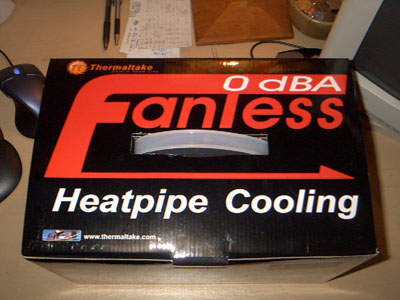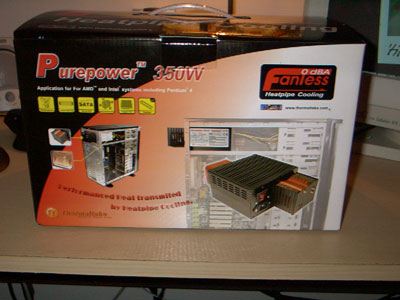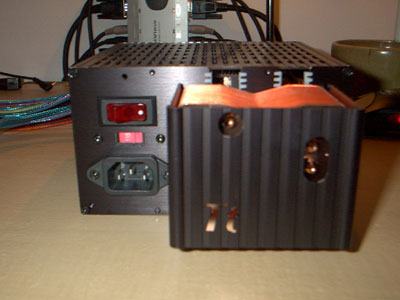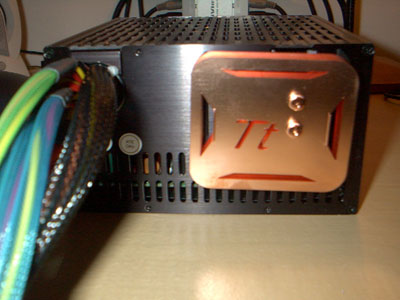Thermaltake’s Silent Power Supply Uncovered
Packaging and Impressions
The package arrived in excellent condition, due in large part to the top quality box and packaging material used by Thermaltake; I think it’s safe to say that if you buy this power supply it will arrive undamaged unless dropped from the plane at 10,000 ft. The box features an eye catching design, while also giving you a highlight of the power supplies major features.


The first thing I did when I received the package was open it up and gawk at the heat pipes and heat sinks. Thermaltake has a really interesting design — one that other silent power supply makers may want to emulate. By attaching large copper heat sinks to the outside of the power supply, heat is moved from the components to areas with circulating air. This is a big improvement over static designs that just use thick aluminum housings to passively dissipate heat.


The external heat sinks are attached to the heat generating components of the power supply using heat pipes. There are three heat pipes coming off a large internal heat sink; this sink is attached to several large power transistors. The heat pipes are then routed out the back of the power supply into the open air where they are attached to the external heat sink. This creates a very efficient and direct path for heat generated by the transistors. The other two heat pipes are attached to a second set of transistors. These heat pipes route directly into the computer case and to a heat sink outside the power supply enclosure. This second heat sink is smaller than the external one suggesting the lower thermal requirements of the components being cooled. My complaint here is that there is no facilitated heat path for heat trapped inside the case. With most standard power supplies there is a fan that pulls heat from the top of the case out. In contrast not only is there no way for the Thermaltake to pull air out it actually puts more heat into the case. On the upside this was not an issue in my system, during testing the heat generated was low and my standard case fans were more than adequate for cooling.

Comments are closed.